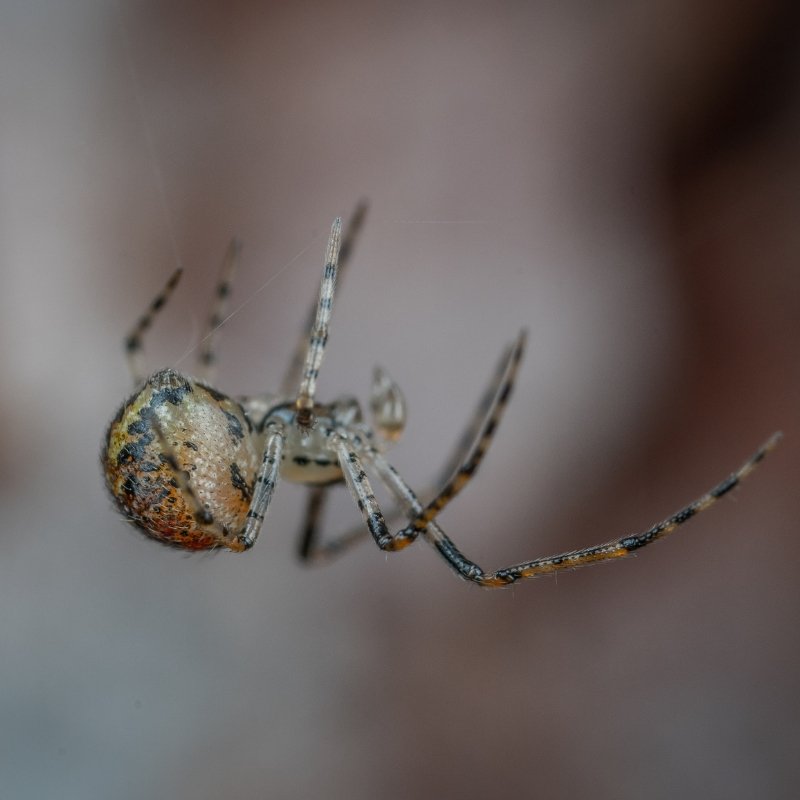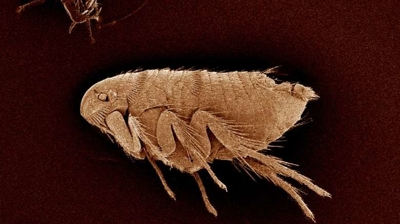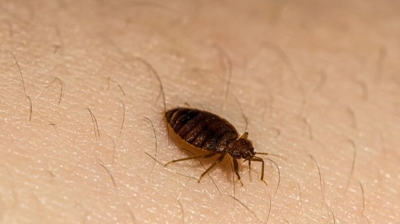
House Spiders

Are House Spiders Harmful?
House spiders (Parasteatoda tepidariorum) are not considered harmful to humans. These spiders are generally harmless and pose no significant threat. Here are some reasons why they are not dangerous:
- Venom: While house spiders do possess venom glands and can deliver venom to subdue their prey, their venom is not potent enough to cause harm to humans. Their bites are typically too mild to be felt or may result in localized pain, redness, or swelling, similar to a mild bee sting.
- Non-Aggressive: House spiders are not aggressive toward humans. They are more likely to retreat or hide when they sense human presence rather than bite in defense.
- Rare Bites: Bites from house spiders are infrequent because they prefer to avoid human contact. Bites generally occur when a spider is accidentally squeezed or feels threatened.
- Health Risks: Unlike some other spiders, house spiders are not known to transmit diseases or cause allergic reactions in humans.
- Beneficial Predators: These spiders play a valuable role in pest control by capturing and consuming small insects in and around homes. Their presence can actually be beneficial by helping to reduce the population of unwanted pests.
House spiders are not dangerous to humans. While they may bite if they feel threatened, the resulting effects are typically mild and temporary. These spiders are more of a nuisance to pests and are considered beneficial in helping to keep insect populations in check within human habitats.
Learn more: Do House Spiders Bite?
House Spider Removal
Although house spiders often play a useful ecological role, there are several practical reasons people choose to remove or manage populations of house spiders inside their homes. Indoors, these spiders reproduce readily, and once established they can create dense, persistent webs in corners, storage areas, basements, and garages. This buildup not only leads to an untidy appearance but also attracts more insects and debris, creating an ongoing maintenance issue. Their tendency to occupy hidden crevices means they can spread unnoticed until their numbers are high enough to become a nuisance. For individuals with arachnophobia—or even mild discomfort around spiders—regular encounters can cause stress and reduce a sense of comfort in their living space. In rare cases, their bites can cause localized irritation, which is an unnecessary risk around children, pets, or sensitive individuals. Removing them also limits the chance of them preying on beneficial insects that homeowners prefer to keep, such as pollinators that may occasionally enter structures. Managing house spider populations is primarily about maintaining a clean, comfortable, and predictable indoor environment.
Learn more: How To Get Rid Of House Spiders
House Spider Control
Hiring our professional pest control for house spiders is highly recommended for several reasons:
- Accurate Identification: Not all house spiders are harmless. Some, like brown recluses or black widows, can pose serious health risks. Our professionals can identify the species of spider accurately, assess whether the infestation is a health hazard, and recommend the safest and most effective treatment tailored to that species.
- Effective and Targeted Treatment: Over-the-counter sprays often provide only temporary relief. Our professionals have access to industrial-grade insecticides that are more effective and longer-lasting, treatments designed for hard-to-reach areas like attics, basements, wall voids, and crawl spaces, and integrated approaches that target spiders and their prey (insects), reducing the chance of re-infestation.
- Prevention of Re-Infestation: Spiders are opportunistic and often return if conditions are favorable. Our professionals can seal entry points, such as cracks, gaps, and vents, recommend changes to reduce moisture, clutter, and insect prey, which attract spiders, and implement a long-term pest management plan that keeps spiders away, rather than just eliminating the ones you see.
- Health and Safety Considerations: Even small spider populations can be risky for certain households, especially if there are children or elderly individuals who might be more susceptible to bites, or pets that could come in contact with spiders or insecticides. Our professionals know safe application methods to minimize chemical exposure while maximizing effectiveness.
- Time and Stress Savings: Spiders often hide in hard-to-see areas, making DIY efforts frustrating and often ineffective. Hiring our professionals save you hours of trial-and-error spraying, and provides peace of mind that the problem is being handled comprehensively, not just superficially.
- Cost-Effectiveness in the Long Run: While our professional treatments may seem more expensive upfront, it can save money by preventing larger infestations that require repeated DIY treatments, reducing the risk of property damage (some spider prey, like insects, can damage fabrics, food stores, or wiring), and avoiding medical costs from spider bites in dangerous species.
Our professional pest control is not just about killing spiders—it’s about identifying the problem, treating it effectively, preventing recurrence, and ensuring the safety of your home and family. DIY methods can work for small, minor issues, but our professionals provide lasting results, safety, and peace of mind.
House Spider Exterminators
Choosing our local exterminators over a national provider results in a far more effective and satisfying experience when dealing with house spiders. Our local specialists understand the specific micro-habitats, seasonal patterns, and structural quirks common to homes in the area, which allows for more accurate identification of breeding sites and more targeted treatment plans. That familiarity also means you’re not getting a one-size-fits-all program; instead, you receive tailored service that adapts to your home’s layout, moisture conditions, and the typical insect pressures that influence spider activity.
Our local providers also deliver a level of responsiveness that larger companies struggle to match. Scheduling is usually faster, callbacks are handled promptly, and you deal with the same technician or small team, which builds accountability and consistency in the work. When we know your home and its history, we can spot recurring issues early and prevent spiders from re-establishing themselves. Communication is typically clearer and more personal as well, so questions get answered directly rather than routed through call centers or generic support lines.
There’s also a practical advantage in terms of cost and transparency. Our local exterminators are more straightforward with pricing, avoid unnecessary add-ons, and provide service plans that reflect what your property actually needs rather than standardized corporate packages. Because our reputation depends on word-of-mouth within our service area, we have a strong incentive to deliver thorough work, stand behind our treatments, and maintain long-term trust with homeowners.
House Spider Solutions
Our exterminators use Integrated Pest Management (IPM) to control house spiders because, although they are generally harmless, their webs can accumulate in homes, creating unsightly messes and becoming a nuisance for residents. IPM begins with a thorough inspection to identify spider activity, web locations, and environmental factors that attract them, such as cluttered spaces, dark corners, and abundant insect prey. Management strategies focus on habitat modification by reducing clutter, improving ventilation, controlling moisture, and minimizing insect populations to make areas less hospitable for house spiders. Physical controls, including careful web removal and exclusion techniques, help limit their presence, while targeted insecticide applications are applied selectively only in areas with persistent activity. Ongoing monitoring allows our exterminators to track populations, assess the effectiveness of treatments, and prevent reinfestation. By integrating inspection, habitat management, selective control, and monitoring, IPM provides a long-term, safe, and environmentally responsible approach to managing house spider populations.
What Do House Spiders Look Like?
The house spider (Parasteatoda tepidariorum) is a relatively small arachnid with distinct physical characteristics. Here is a detailed description of their appearance:
- Size: House spiders are typically quite small, with an adult body length ranging from 4 to 9 millimeters (0.16 to 0.35 inches).
- Coloration: Their coloration can vary, but they often have the following features: The front part of the spider, called the cephalothorax, is usually light brown to tan in color. The abdomen, which is the posterior part of the spider, tends to be yellowish-brown to dark brown. It can have a mottled or geometric pattern on its dorsal side, which may appear as a series of chevrons or bands.
- Abdomen Shape: The abdomen of the house spider is typically rounded or somewhat spherical, giving the spider a compact appearance.
- Legs: They have eight long, thin legs, which are covered in fine hairs. The legs are often a similar color to the cephalothorax.
- Eyes: These spiders have eight eyes arranged in two rows. The eyes are usually small and not very prominent.
- Spinnerets: At the rear of the abdomen, house spiders have spinnerets, which are specialized silk-spinning structures. These spinnerets are used to create their characteristic cobwebs.
House spiders are small arachnids with a compact body. They typically have a light brown to tan cephalothorax and a yellowish to dark brown abdomen, often with distinctive patterns. Their long, slender legs and the spinnerets at the rear of their abdomen are notable features of their appearance.
Where Are House Spiders Found?
House spiders (Parasteatoda tepidariorum) are highly adaptable arachnids that can be found in and around human dwellings. They are frequently encountered in a variety of indoor and outdoor locations. Here are some of the places where you might find these spiders:
- Corners: House spiders are known for building irregular webs in corners of rooms, especially near ceilings.
- Windows: They often construct webs around window frames and sills.
- Attics and Basements: These spiders can be found in attics and basements, where they seek refuge and establish webs in hidden areas.
- Closets: Dark, undisturbed closets may also be home to house spiders.
- Sheds and Garages: In storage spaces, you may find them in corners and along the walls.
- Bathrooms: They can occasionally be found in bathrooms, often near fixtures and corners.
- Cellars: House spiders may inhabit cellars and crawl spaces.
- Exterior Walls: House spiders sometimes construct webs on the exterior walls of buildings.
- Garden Sheds: These spiders may also be found in garden sheds, where they build webs in secluded corners.
- Fences: Outdoor fences can also host their webs, especially in less trafficked areas.
- Vegetation: House spiders may be present in gardens, particularly in dense vegetation and among plants.
- Cracks and Crevices: These spiders are adept at finding and occupying small cracks and crevices in walls, furniture, and other structures.
- Sheltered Areas: House spiders prefer sheltered and less disturbed locations, so they are often found in areas where they are less likely to be disturbed by human activity.
House spiders are opportunistic and will build their webs in areas where prey is likely to be abundant. Their ability to adapt to indoor and outdoor environments makes them a common presence in many households and buildings. While they are not dangerous to humans, they play a valuable role in controlling insect populations by capturing and consuming various pests that venture into their webs.
What Do House Spiders Eat?
House spiders (Parasteatoda tepidariorum) are opportunistic predators and consume a variety of small insects and arthropods that become ensnared in their webs. Their diet primarily consists of:
- Flying Insects: House spiders often capture and feed on flying insects such as flies, mosquitoes, moths, and small winged ants.
- Crawling Insects: They also consume crawling insects, including ants, beetles, and small roaches, which may inadvertently wander into their webs.
- Other Spiders: House spiders may engage in cannibalism and prey on smaller or weaker spiders, including other members of their own species.
- Non-Insect Prey: While insects are their primary prey, house spiders can also catch non-insect arthropods like small spiders, springtails, and other tiny creatures that end up in their webs.
- Prey Entrapped in Webs: Their diet mainly consists of prey items that become ensnared in their cobwebs. They immobilize their prey by wrapping it in silk and deliver digestive enzymes to break down the prey's body, making it easier to consume.
House spiders play a beneficial role in controlling insect populations within their habitat. By capturing and consuming various pests, they can help reduce the number of unwanted insects in and around homes. While they are not dangerous to humans and are generally considered harmless, they contribute to natural pest control and are a valuable part of the ecosystem.
House Spider Life Cycle
The life cycle of house spiders (Parasteatoda tepidariorum) includes several stages from birth to adulthood. Here is an overview of their life cycle:
- Egg Stage: The life cycle begins when the adult female spider lays her eggs. These eggs are usually encased in a silken sac, which she attaches to a web or another suitable surface. The female guards the egg sac, protecting it from predators and environmental factors.
- Spiderling Stage: After an incubation period, spiderlings hatch from the egg sac. They emerge as tiny, immature spiders. At this stage, spiderlings resemble miniature versions of adult house spiders but lack the distinctive markings and coloration.
- Juvenile Stage: As spiderlings grow, they go through multiple molts or shedding of their exoskeleton to accommodate their increasing size. With each molt, they gradually develop adult characteristics, including the species-specific coloration.
- Subadult Stage: Subadult spiders are larger than spiderlings and have developed more of the physical features seen in adult house spiders. They continue to feed, grow, and mature.
- Adult Stage: Once a spider reaches full maturity, it enters the adult stage. This stage is marked by the ability to reproduce. Adult males and females differ in size, with females typically being larger. Mating occurs, and females produce egg sacs to continue the life cycle.
- Reproduction: Mating typically involves the male spider initiating courtship, often by vibrating the female's web. Once mating is successful, the female will produce one or more egg sacs, each containing a large number of eggs. The female guards the egg sac and may stay with it until the spiderlings hatch.
- Lifespan: The lifespan of a house spider can vary, but it is typically about one to two years. The exact duration of each life stage, from egg to adult, can vary depending on environmental conditions, food availability, and other factors.
- Dispersal: After hatching from the egg sac, spiderlings disperse by releasing silk threads into the air, a behavior known as "ballooning." This allows them to be carried by the wind to new locations, helping them establish in different areas.
The life cycle of house spiders is characterized by gradual growth, molting, and reproductive activity. These spiders reproduce through sexual reproduction, with females being responsible for egg production and care. As they continue to reproduce and disperse, house spiders play a role in maintaining their population in various environments, including human habitats.

Hear From Our Happy Customers
-
"Fantastic & Patient"
Jarvis was fantastic and patient. He answered my questions with an in-depth explanation and addressed all of my areas of concern. Would love for him to be my assigned tech going forward. Well done!
- Yonnette M. -
"Very Knowledgeable"
The tech that arrived was courteous, professional, and very knowledgeable. He was Great.
- Uerial I. -
"Great Communication"
Tech was on time, communication was great, and he accommodated my needs.
- Alonzo W. -
"Professional & Considerate"
I’m pleased with Miche services. Jarvis came today. Professional and considerate. Thank you!
- Judy B. -
"Exceeds Expectations"
I can’t say enough positive things about this company... The tech that came out, Jarvis went above and beyond my expectations. Thank you guys, I will continue using your services.
- Jake M. -
"Wonderful Service"
Wonderful service. Jarvis is great. Took care of everything I needed. Thank you!
- Henry P.



